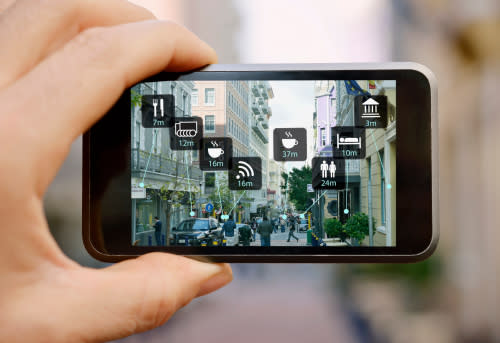Augmented Reality Is Making a Comeback

Augmented reality (AR) and its application in the real word looked certain to go mainstream with the release of Google Glass a few years ago as it promised users a variety of truly immersive experiences from real-time language translation to an efficient way for students to engage with new material. However, Google's Glass project was sent back to the lab and the focus has shifted from mainstream to enterprisebut AR is the future and here are just a few predictions on how AR will change our lives:
Digital Marketing:
AR appears to the missing link in digital marketing, as it enables customers to engage with a product/service at home, in store or on-demand. So often, product packaging was an afterthought, with focus instead on the product (and rightly so), yet augmented packaging allows customers to interact with a product in a whole new way. Recently, the creator of Angry Birds, Rovio, partnered with an augmented reality firm in order to make the game relevant not only on mobile and the big screen but also to our surroundings. Using Augmented Reality "birdCodes" in stores and on merchandise packaging, enables the Angry Birds fan base to unlock mini games, power boosts and other special content in the Angry Birds Action! App. More importantly, by partnering with Lego, McDonald's, Walmart, H&M and PEZ among others, Rovio has been able extend the Angry Birds brandto coincide with those products/services that we tend to consume on a daily a basis, be it happy meals for our kids from McDonalds or apparel from H&M.
Rovio may be one of the early adopters in weaving this technology into their advertising campaigns but it may not be long until we see an increase of augmented packaging on street marketing, geo-localized apps and interactive consumer products as businesses leverage the technology in an attempt to make their products/services ubiquitous.
E-commerce:
E-commerce sales continues to dominate traditional retail store sales but one of the reservations for online consumers is the cumbersome process involved when purchasing items such as apparel as the convenience of using a fitting room to check whether a particular item of apparel fits well is difficult to replicate in the digital world. Sure,some online retailers such as those specialising in footwear have tried to bridge the gap by allowing you to send it your current pair of footwear with the aim of matching the size and fit with your online order but it isn't as seamless as the retail experience. Consequently, retailers are turning to AR to create virtual fitting rooms, where apparel can be tried on live, yet it doesn't only apply to apparel as customers can get a feel for how furniture or household electronics would look in their home too.
Education:
There have been numerous calls for the implementation of technology in classrooms to engender a richer learning environment for our students, and help them grasp concepts much quicker than simply reading a text from a book. Weaving AR with traditional education encourages students to engage with a topic at a deeper level as the text or image is transformed into dynamic, 3D graphics.The most banal subjects you may have studied at college such as Finance, which usually involves analysing balance sheets and company reports to form a strong investment thesis could be far more captivating with application of AR. Better yet, It is scientifically proven that the more senses we use whenever we attempt to learn new material, the easier it is to remember.
Medical, Military and Industrial:
While the thought of applying AR technology in the military might conjure up images of 'the terminator', a half human half borg solider, there appears to be numerous practical applications, particularly for soldiers, as AR enables them to obtain information about their surroundings or receive detailed 3D maps.
In the Medical industry the use of AR is a no brainer as aspiring medical students such as trainee surgeons get the opportunity to embed procedural techniques to memory, and familiarizethemselves with their working environment not by watching from a distance but by seeing operations from the surgeon's perspective. This is critical as surgery has always been learnt through apprenticeships in which students spend countless hours in an operating theatre to get quality training from a mentor. Many believe that the future of medical training involves a combination of AR and Virtual Reality (VR) in order to create full surgical simulations with audio, visual and tactile feedback, thus, whenever a new procedure is performed on a person it won't be a totally new experience for a medical professional as he/she has previously performed it in a simulated setting.
The potential advantages of using AR in the engineering industry is one of the hottest topics of debate at the moment as occupations that rely on crucial information could implement Augmented Reality tools to visually impose their solutions. One such use case is for Engineers, who have to browse through a ton of information e.g. specifications sheets or numerous databases, yet this could be a thing of the past as AR has the potential to make the world around them, the database.
Time will tell whether the majority people in the world warm up to the idea of viewing the real world with a virtual overlay but what is certain is that the practical applications of AR are undeniable, perhaps in a few years' time this article may be brought to life with dynamic 3D graphics, now that would be awesome!
